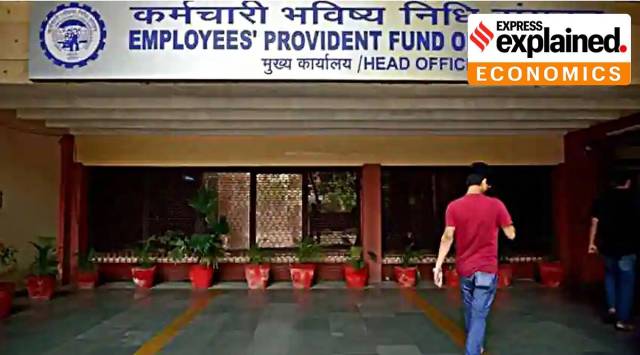If the member wants to opt for a higher pension, the portal provides members with a link for going ahead with the process of ‘pension on higher salary: exercise of joint option’. The applicant will then be required to fill in details such as Name, UAN (Universal Account Number), Date of Birth, Aadhaar, and Aadhaar-linked mobile number.

 Credit: Screengrab/EPFO
Credit: Screengrab/EPFO
The member will have to upload the joint option from the employer. After the validation of the joint option, a member will then be required to provide details of the provident fund account of all previous employments. Some details are auto-filled by the EPFO, but if a member wants to add more information about any additional place of employment, they can fill in the details. The member will also have to give details about the latest PF statement, which would be for the year 2022-23.
After the submission of the details, members are provided with an acknowledgement number. The applications will then be processed by the EPFO officials, after which demand letters would be raised to the members. So far, over 1,000 demand letters are learnt to have been issued by the retirement fund body. As many as 30 employers are learnt to have not agreed to validate the joint option, but the EPFO has not given reasons for the same.
Since employers have a greater workload to provide wage details and historical records of employees in the processing of joint options for the higher pension, they have been provided with a three-month extension till September 30. Employees, however, have to detail their choice for the higher pension by July 11.
Online calculator:
The EPFO has also provided an online calculator in the format of an Excel sheet to estimate the amount required to be paid now to get the higher pension linked to their actual salary. This can be accessed at ‘calculator for estimating dues for pension on higher wages’ at the bottom of this web link. This is an important tool for members to assess their dues, especially members who have withdrawn from their provident fund account earlier, and thus, may now be required to deposit the balance dues to avail pension after retirement.
Pension Refund Calculator
 Credit: Screengrab/EPFO
Credit: Screengrab/EPFO
In the Excel sheet, a member can calculate their pension amount by putting in monthly wage details since the start of their employment. Provident fund amount is deducted from an employee’s salary which means basic salary plus dearness allowance and employees will have to put details about their salaries from the time they became a member of the EPFO and EPS. The Excel sheet has a column showing ‘contribution due’ to the member, which compared with another column of ‘contribution paid’ gives an estimate of the balance amount. The balance amount is linked to the historical annual interest rates of the EPFO to give an estimate of the dues till the end of the financial year 2022-23.
Story continues below this ad
Pension fund contribution:
The pension fund comprises a deposit of 8.33% of the employers’ contribution towards the PF corpus. Both employees and employers contribute 12% of the employee’s basic salary, dearness allowance and retaining allowance, if any, to the EPF. The employee’s entire contribution goes to EPF, while the 12% contribution by the employer is split as 3.67% to EPF and 8.33% to EPS. The Government of India contributes 1.16% of an employee’s pension for those below the wage threshold. Employees do not contribute to the pension scheme.
The Supreme Court in a ruling on November 4 last year upheld the amendments to the Employees’ Pension (Amendment) Scheme, 2014, providing another chance for employees who were existing EPS members as on September 1, 2014, to contribute up to 8.33% of their ‘actual’ salaries — as against 8.33% of the pensionable salary capped at Rs 15,000 a month — towards pension.
At the time of the introduction of EPS, the maximum pensionable salary was Rs 5,000 per month. This was subsequently raised to Rs 6,500 and, from September 1, 2014, to Rs 15,000. The pension contribution currently is 8.33% of Rs 15,000, that is, Rs 1,250 — unless the employee and employer have opted to contribute at an actual basic salary exceeding the pensionable salary. Last month, in a circular, the EPFO said an additional contribution of 1.16% of basic wages for subscribers opting for the higher pension will be managed from employers’ contributions towards the EPFO.



 Credit: Screengrab/EPFO
Credit: Screengrab/EPFO Credit: Screengrab/EPFO
Credit: Screengrab/EPFO




































